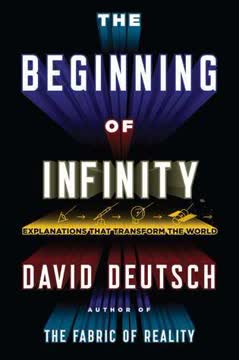Key Takeaways
1. Innovation personas are essential for overcoming resistance to change
The Devil's Advocate may never go away, but on a good day, the ten personas can keep him in his place. Or tell him to go to hell.
Innovation requires champions. Organizations often resist change, with skeptics and naysayers quick to shoot down new ideas. The ten innovation personas provide a framework for individuals to counteract this negativity and drive positive transformation. By adopting these roles, team members can more effectively advocate for innovation, bringing fresh perspectives and creative problem-solving approaches.
Diverse skills fuel innovation. The ten personas encompass a wide range of talents and mindsets:
- Learning roles: Anthropologist, Experimenter, Cross-Pollinator
- Organizing roles: Hurdler, Collaborator, Director
- Building roles: Experience Architect, Set Designer, Caregiver, Storyteller
By cultivating these diverse skillsets within a team, organizations create a more robust innovation ecosystem. Each persona contributes unique strengths that, when combined, can overcome obstacles and push breakthrough ideas forward.
2. The Anthropologist brings fresh insights through keen observation
The Anthropologist humanizes the scientific method and applies it to the business world.
Curiosity drives discovery. Anthropologists in the business world approach situations with a beginner's mind, setting aside preconceptions to truly see and understand human behavior. This allows them to uncover latent needs and opportunities that others might miss. By immersing themselves in the customer's world and paying attention to subtle details, Anthropologists gather rich insights that can inform product development and service design.
Observation techniques yield results. Anthropologists employ various methods to gather insights:
- Shadowing customers in their natural environments
- Conducting in-depth interviews and home visits
- Creating cultural probes and diary studies
- Analyzing artifacts and tools people use
- Capturing photo and video documentation
These techniques help organizations move beyond surface-level customer feedback to gain a deeper understanding of user needs, behaviors, and pain points. This empathetic approach leads to more human-centered innovations that truly resonate with customers.
3. The Experimenter turns ideas into reality through rapid prototyping
Experimenting in our world typically means prototyping, and prototyping is central to the IDEO tool set, as essential as a hammer is for a carpenter.
Failing fast leads to success. Experimenters embrace an iterative approach, quickly turning concepts into tangible prototypes that can be tested and refined. This rapid prototyping mindset allows teams to learn from failures early in the process, when changes are less costly and time-consuming. By creating multiple low-fidelity prototypes, Experimenters can explore various solutions and gather valuable feedback before committing to a final design.
Prototyping takes many forms:
- Sketches and storyboards
- Physical mock-ups using simple materials
- Digital prototypes and simulations
- Role-playing and experience prototypes
- Wizard of Oz techniques (simulating functionality)
The key is to choose the appropriate fidelity and method based on what needs to be learned. Experimenters know that the act of making ideas tangible often sparks new insights and helps teams align on a shared vision.
4. The Cross-Pollinator connects disparate ideas to spark innovation
Cross-Pollinators can create something new and better through the unexpected juxtaposition of seemingly unrelated ideas or concepts.
Diverse experiences fuel creativity. Cross-Pollinators draw inspiration from a wide range of industries, cultures, and disciplines. By making unexpected connections between seemingly unrelated concepts, they generate novel solutions to complex problems. Organizations can foster cross-pollination by:
- Encouraging employees to pursue varied interests and hobbies
- Facilitating job rotations and cross-functional projects
- Bringing in outside experts and diverse perspectives
- Organizing field trips and immersive experiences in different industries
T-shaped individuals drive innovation. The most effective Cross-Pollinators are "T-shaped" people, possessing both depth of expertise in one area and breadth of knowledge across many fields. This combination allows them to draw meaningful connections and translate ideas across domains. Organizations should seek out and nurture T-shaped talent to enhance their innovation capabilities.
5. The Hurdler creatively overcomes obstacles to progress
Hurdlers know that you don't always have to tackle a challenge head-on if you can find a way to sidestep it.
Persistence is key. Hurdlers are resourceful problem-solvers who refuse to let obstacles derail progress. They approach challenges with a positive, can-do attitude and find creative ways to work around roadblocks. This often involves:
- Reframing problems to find alternative solutions
- Leveraging limited resources in innovative ways
- Building coalitions and finding unlikely allies
- Challenging assumptions and conventional wisdom
Constraints breed innovation. Hurdlers recognize that limitations can actually spark creativity. By embracing constraints and viewing them as opportunities rather than barriers, Hurdlers often discover elegant solutions that might have been overlooked in a more resource-rich environment.
6. The Collaborator builds synergy and breaks down silos
The Collaborator helps bring eclectic groups together, and often leads from the middle of the pack to create new combinations and multidisciplinary solutions.
Diverse teams drive innovation. Collaborators excel at bringing together individuals with different backgrounds, skills, and perspectives to tackle complex challenges. They create an environment where cross-functional teamwork thrives, breaking down organizational silos that can stifle innovation. Effective Collaborators:
- Facilitate open communication and idea sharing
- Build trust and psychological safety within teams
- Mediate conflicts and find common ground
- Recognize and leverage diverse strengths
Collaboration requires intentional design. Organizations can foster a collaborative culture by:
- Creating dedicated spaces for cross-functional interaction
- Implementing collaborative tools and technologies
- Rewarding teamwork and shared successes
- Encouraging job rotations and cross-pollination of ideas
By prioritizing collaboration, companies can tap into the collective intelligence of their workforce and generate more innovative solutions.
7. The Director orchestrates innovative projects and inspires teams
Directors are content to let others take the spotlight, confident in the knowledge that their behind-the-scenes work will make the whole production come together.
Leadership empowers creativity. Directors play a crucial role in creating the conditions for innovation to flourish. They assemble diverse teams, set clear goals, and provide the resources and support needed for success. Effective Directors:
- Articulate a compelling vision and purpose
- Foster a culture of psychological safety and risk-taking
- Remove obstacles and shield teams from bureaucracy
- Celebrate both successes and productive failures
Balance structure and flexibility. While providing direction, Directors also give teams the autonomy to explore and experiment. They create a framework for innovation while allowing for spontaneity and serendipity. This delicate balance helps maintain focus while still encouraging creative breakthroughs.
8. The Experience Architect designs memorable customer interactions
A good Experience Architect sets the stage for positive encounters with your organization through products, services, digital interactions, spaces, or events.
Holistic design creates value. Experience Architects look beyond individual touchpoints to craft cohesive, end-to-end customer journeys. They consider every interaction a customer has with a product, service, or brand, ensuring each element contributes to a positive and memorable experience. Key principles include:
- Mapping the entire customer journey
- Identifying and addressing pain points
- Creating moments of delight and surprise
- Ensuring consistency across channels
- Appealing to multiple senses
Emotional connections drive loyalty. Experience Architects recognize that how customers feel is just as important as the functional aspects of a product or service. By designing experiences that evoke positive emotions and create lasting memories, they build stronger connections between customers and brands.
9. The Set Designer shapes spaces to influence behavior and attitude
The Set Designer can be the "X factor" in a company, the intangible element that helps turn around an organization.
Physical environments impact innovation. Set Designers understand that the spaces where people work profoundly influence creativity, collaboration, and productivity. They strategically design environments to support desired behaviors and foster innovation. Key considerations include:
- Balancing collaborative and focused work areas
- Creating flexible spaces that adapt to changing needs
- Incorporating elements that inspire and energize
- Facilitating chance encounters and informal interactions
- Reflecting and reinforcing company culture through design
Small changes can have big impacts. Set Designers recognize that even minor adjustments to a space can significantly affect behavior and attitudes. Simple interventions like rearranging furniture, adding whiteboards, or creating casual meeting areas can spark new patterns of interaction and collaboration.
10. The Caregiver anticipates customer needs with empathy
The Caregiver is the foundation of human-powered innovation.
Empathy drives customer-centricity. Caregivers deeply understand and anticipate customer needs, often before customers themselves are aware of them. This empathetic approach leads to more meaningful innovations and stronger customer relationships. Caregivers excel at:
- Active listening and observation
- Putting themselves in the customer's shoes
- Identifying unmet needs and pain points
- Personalizing experiences and interactions
- Going above and beyond to delight customers
Service design enhances experiences. Caregivers apply design thinking to services, creating seamless and satisfying customer journeys. They focus on both the functional and emotional aspects of service delivery, ensuring that every touchpoint reinforces positive perceptions of the brand.
11. The Storyteller builds culture through compelling narratives
Stories persuade in a way that facts, reports, and market trends seldom do, because stories make an emotional connection.
Narratives shape culture. Storytellers play a crucial role in building and reinforcing organizational culture. They craft and share compelling narratives that:
- Communicate core values and purpose
- Celebrate successes and learn from failures
- Inspire and motivate employees
- Create a shared sense of identity and belonging
- Bring the company's mission to life
Stories drive change. Effective Storytellers use narratives to overcome resistance to change and build support for new initiatives. By framing innovations within relatable stories, they help others understand the need for change and envision a positive future.
Last updated:
FAQ
What's The Ten Faces of Innovation about?
- Focus on Personas: The book introduces ten distinct personas that drive innovation within organizations, emphasizing the human aspect of creativity.
- Counteracting Negativity: It addresses the challenge of the "Devil's Advocate," which often stifles new ideas, and suggests that adopting these personas can help counteract negativity.
- Real-World Examples: Tom Kelley shares case studies from IDEO and other companies to illustrate how these personas can enhance creativity and collaboration.
Why should I read The Ten Faces of Innovation?
- Enhance Creative Thinking: The book provides practical strategies for individuals and teams to think creatively and approach problems from different angles.
- Learn from Experts: Written by Tom Kelley, a leader in design and innovation, it draws on IDEO's extensive experience in fostering creativity.
- Build a Culture of Innovation: Offers actionable advice on creating an environment that supports continuous innovation, valuable for leaders and team members alike.
What are the key takeaways of The Ten Faces of Innovation?
- Ten Innovation Personas: The book outlines ten personas, such as the Anthropologist and Collaborator, that individuals can embody to drive innovation.
- Importance of Collaboration: Emphasizes collaboration as crucial for successful innovation, detailing how diverse teams generate better ideas.
- Prototyping and Experimentation: Advocates for a culture of prototyping and experimentation, encouraging teams to test ideas quickly and learn from failures.
What are the best quotes from The Ten Faces of Innovation and what do they mean?
- “The Devil’s Advocate may be the biggest innovation killer in America today.”: Highlights the detrimental impact of negativity on new ideas, emphasizing the need for a supportive environment.
- “Innovation is now recognized as the single most important ingredient in any modern economy.”: Underscores the critical role of innovation in driving economic growth and competitiveness.
- “The personas are about ‘being innovation’ rather than merely ‘doing innovation.’”: Reflects the idea that innovation should be ingrained in the culture and mindset of individuals and organizations.
What are the ten personas described in The Ten Faces of Innovation?
- The Anthropologist: Observes human behavior to gain insights into customer needs, emphasizing empathy and understanding.
- The Experimenter: Focuses on prototyping and testing ideas through trial and error, encouraging learning from failures.
- The Collaborator: Brings people together to work towards common goals, facilitating teamwork and communication.
- The Storyteller: Crafts compelling narratives that communicate ideas and inspire action, using storytelling to connect with audiences.
How does The Ten Faces of Innovation suggest combating the Devil's Advocate?
- Adopt Innovation Personas: By embodying the ten personas, team members can counteract the negativity of the Devil's Advocate.
- Encourage Positive Dialogue: Fosters a culture of constructive criticism rather than destructive negativity, promoting open discussions.
- Create a Safe Environment: Establishes a supportive atmosphere where team members feel comfortable sharing ideas without fear of harsh criticism.
What role does collaboration play in The Ten Faces of Innovation?
- Essential for Innovation: Portrayed as a vital component of the innovation process, enabling teams to leverage diverse skills and perspectives.
- Breaking Down Silos: Discusses the importance of cross-functional teams that bring together individuals from different departments.
- Building Relationships: Highlights the need for trust and camaraderie to enhance collaborative efforts.
How can organizations implement the concepts from The Ten Faces of Innovation?
- Identify and Develop Personas: Start by identifying individuals who naturally embody the ten personas and encourage them to take on these roles.
- Foster a Culture of Experimentation: Encourage teams to prototype ideas and learn from failures, creating an environment where experimentation is valued.
- Promote Cross-Functional Collaboration: Establish cross-functional teams and facilitate regular communication between departments.
What is the significance of prototyping in The Ten Faces of Innovation?
- Learning Through Experimentation: Emphasized as a critical method for testing ideas and learning from mistakes.
- Reducing Risk: Allows teams to explore concepts without significant investment, helping identify potential issues early.
- Enhancing Communication: Prototypes serve as tangible representations of ideas, facilitating better communication among team members.
How does The Ten Faces of Innovation define innovation?
- People-Centric Definition: Defined as “people creating value through the implementation of new ideas,” highlighting human involvement.
- Action-Oriented Approach: Emphasizes that innovation requires action and implementation to create real value.
- Continuous Process: Suggests that innovation should be viewed as an ongoing endeavor rather than a one-time event.
How can I apply the concepts from The Ten Faces of Innovation in my organization?
- Identify Existing Personas: Assess current roles within your team and identify which personas are already present.
- Encourage Role Adoption: Foster an environment where team members can adopt different personas based on project needs.
- Create a Culture of Storytelling: Implement storytelling practices to share experiences and insights, building connections among team members.
What is the importance of storytelling in The Ten Faces of Innovation?
- Emotional Connection: Creates an emotional bond between the audience and the message, making it more relatable and impactful.
- Cultural Reinforcement: Reinforces organizational values and culture, helping to create a shared understanding among team members.
- Facilitating Communication: Breaks down barriers and facilitates open communication within teams, encouraging sharing of experiences.
Review Summary
The Ten Faces of Innovation receives mixed reviews, with an average rating of 3.99 out of 5. Readers appreciate the book's framework for innovation roles and practical examples from IDEO. Many find it insightful and applicable to various industries. However, some criticize the writing style as dry and repetitive, feeling the content could have been condensed. The book's organization around ten personas is seen as both helpful and occasionally forced. Overall, readers value the book's ideas on fostering creativity and building innovative teams, despite its flaws.
Similar Books










Download PDF
Download EPUB
.epub digital book format is ideal for reading ebooks on phones, tablets, and e-readers.






